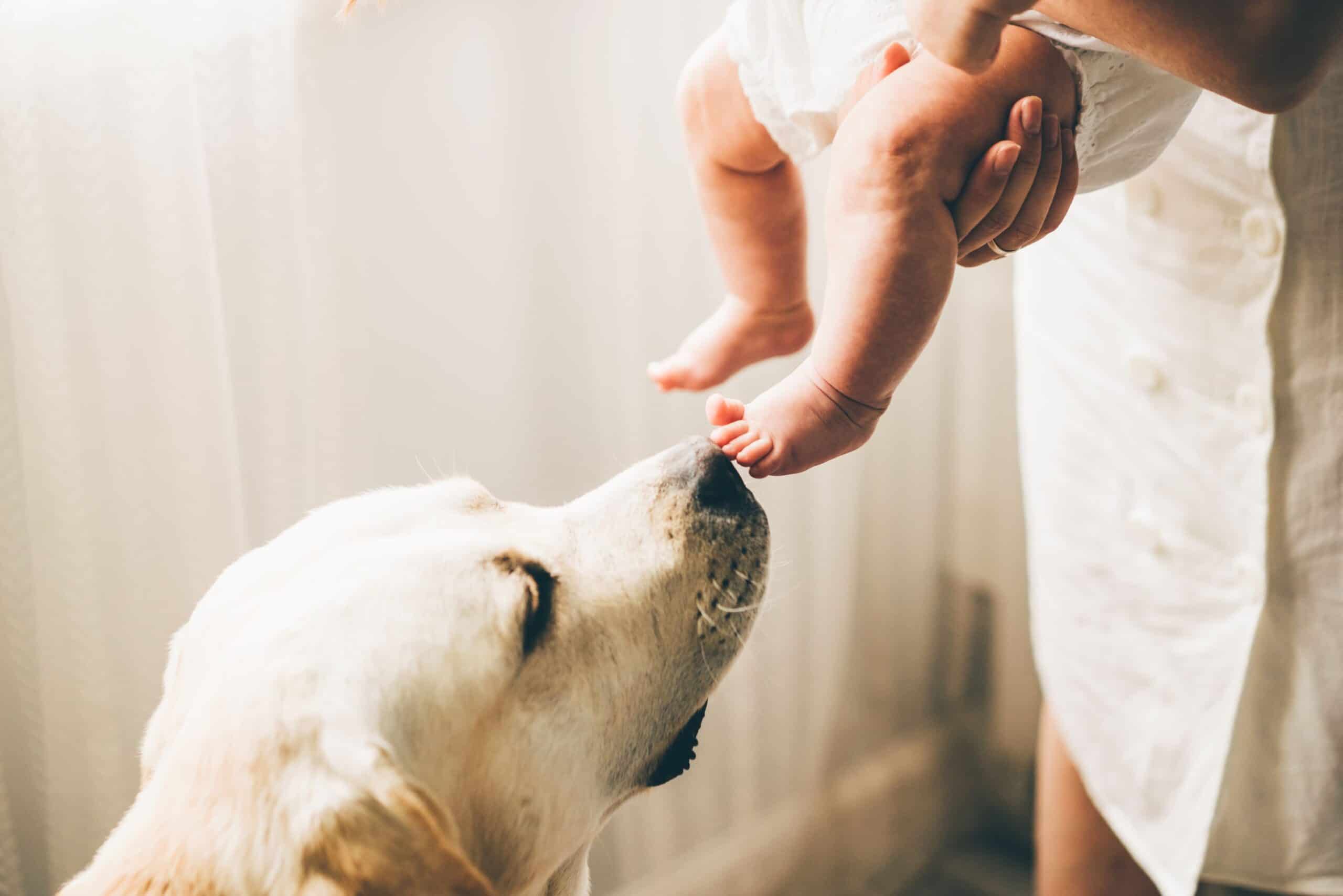How to Prepare Your Pet for a New Baby

Welcoming a new baby into your home is an exciting time, but it’s essential to consider the impact this transition can have on your furry family members. At Beverly Hills Veterinary Associates, we understand the importance of a smooth introduction between your pet and your new baby.
In this blog post, we’ll provide tips on preparing your pet for a new baby, whether you have a dog or a cat. We’re here to help you navigate this exciting chapter in your life and ensure a harmonious environment for everyone involved.
Preparing Dogs for a New Baby
Introducing a new baby to your dog requires some preparation and training. Here are some helpful tips to ensure a successful transition:
Gradual exposure: Start exposing your dog to baby-related sights, sounds, and smells before the arrival of the new baby. Play recordings of baby sounds, use baby powder or lotion and allow your dog to explore baby items such as cribs and strollers. This will help familiarize your dog with these new stimuli.
Positive associations: Create positive associations between your dog and the baby by offering treats or rewards when they are in the baby’s presence. This will help your pet associate the baby with positive experiences.
Obedience training: Ensure your dog knows basic commands such as “sit,” “stay,” and “leave it.” This will be helpful when you need to redirect their attention or establish boundaries around the baby.
Establish boundaries: Set up designated areas where your dog can retreat when they need some alone time. Create a safe space for your dog away from the baby’s nursery or play area. Use baby gates or crates to create physical boundaries if needed.
Preparing Cats for a New Baby
Introducing a new baby to your cat requires some patience and careful planning. Here are some tips to help your cat adjust to the new addition:
Gradual introductions: Allow your cat to become familiar with baby-related scents by using lotions or powders. This will help them associate these scents with positive experiences. Additionally, play recordings of baby sounds to help them acclimate to the noises.
Safe spaces: Cats value their personal space, so provide hiding spots or elevated perches where they can observe the baby from a distance. This will give them a sense of security and control over their environment.
Gradual exposure: Allow your cat to explore the baby’s room at their own pace. Keep the door closed initially and gradually introduce them to the room while supervising their interactions. This will help them become familiar with the baby’s scent and surroundings.
General Tips for a Smooth Transition
Maintain your pet’s routine: Stick to your pet’s routine as much as possible. Changes in feeding, walking, or playtime schedules can add stress to your pet’s life. Consistency and predictability can help them feel secure during this period of change.
Supervise interactions: Always supervise interactions between your pet and the baby. Never leave them alone together, especially in the early stages.
Following these tips on preparing your pet for a new baby can help ensure a smooth transition and a harmonious environment for your growing family.
Every pet is unique, and their reactions to a new baby may vary. If you have concerns or questions, please contact us at (248) 646–5655. The team at Beverly Hills Veterinary Associates wishes you and your furry friend the best as you embark on this exciting journey of expanding your family.
